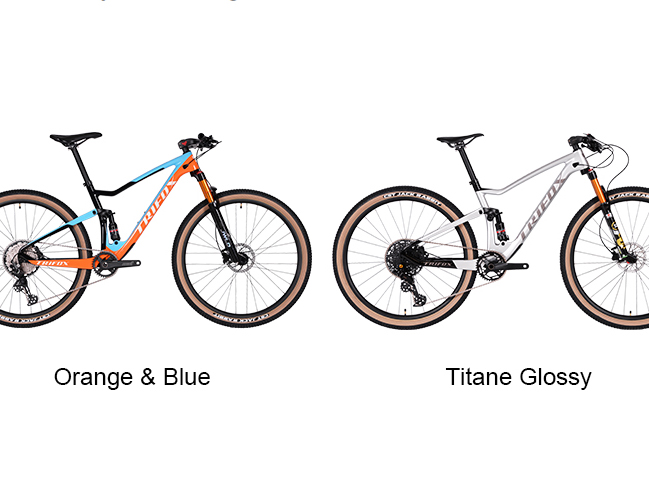
Setting up and adjusting a double suspension frame, such as the Trifox MFM100 Full Suspension Carbon MTB Frame, can significantly enhance your mountain biking experience. A well-tuned suspension system ensures better control, improved traction, and a more comfortable ride over rough terrain. Understanding Double Suspension Double suspension, or full suspension, refers to a bike that has both front and rear shock absorbers. This system helps absorb impacts from rough trails, allowing for a smoother ride and better handling. The Trifox MFM100, with its carbon construction, offers a lightweight yet durable option for serious riders. Tools and Materials Needed Shock Pump: For adjusting air pressure in the suspension.Allen Wrench Set: For making adjustments.Torque Wrench: For precise tightening.Sag Setup Tool (optional): For setting correct sag.Lubricant: For maintaining smooth operation. Step-by-Step Setup and Adjustment Guide Step 1: Install the Frame If you haven't already installed your double suspension frame, follow these steps: Install Headset and Fork: Begin by installing the headset and fork according to the manufacturer's instructions.Attach Rear Shock: Securely attach the rear shock to the frame using the provided hardware. Ensure bolts are torqued to the manufacturer's specifications. Step 2: Setting the Sag Sag is the amount of suspension travel used when you’re sitting on the bike in a neutral position. Proper sag setup is crucial for optimal performance. Measure Sag: Ideally, sag should be around 25-30% of the total travel for both front and rear suspension.Adjust Air Pressure: Use a shock pump to add or release air from the front fork and rear shock until the desired sag is achieved. Most shocks have a recommended pressure range based on rider weight. Step 3: Adjusting Rebound and Compression Rebound and compression adjustments control how quickly the suspension returns to its original position after compression and how it handles impacts, respectively. Rebound Adjustment: Locate the rebound adjustment knob, usually marked with a '+' and '-'. Start by setting it to the midpoint. Test the bike and adjust to your preference—slower rebound for rougher terrain, faster for smoother trails;Compression Adjustment: If your suspension has compression adjustment, start at the recommended factory setting. Adjust accordingly based on trail conditions and personal preference. More compression for smoother trails and less for rough, technical terrain. Step 4: Fine-Tuning Test Ride: Take your bike for a short ride over varied terrain. Pay attention to how the suspension feels and make note of any adjustments needed;Adjust as Needed: Based on your test ride, fine-tune the sag, rebound, and compression settings. Small adjustments can make a significant difference in performance. Step 5: Maintenance Tips Proper maintenance is essential for keeping your double suspension frame performing at its best. Regular Cleaning: Clean the frame and suspension components regularly to prevent dirt and grime buildup;Inspect for Wear: Check for any signs of wear or damage, particularly on the stanchions and seals;Lubricate: Apply appropriate lubricant to moving parts as per manufacturer’s recommendations. Conclusion Setting up and adjusting a double suspension frame like the Trifox MFM100 Full Suspension Carbon MTB Frame can dramatically improve your riding experience. By carefully following the steps for installing, setting sag, adjusting rebound and compression, and maintaining your bike, you’ll enjoy a smoother, more controlled ride. Whether you're tackling technical descents or cruising over rocky trails, a well-tuned suspension system ensures maximum performance and comfort. Happy riding!

Disc wheels are popular among cyclists for their aerodynamic advantages and improved braking performance. Whether you're a seasoned rider or a cycling enthusiast looking to upgrade, understanding how to install and maintain a disc wheel is essential for optimal performance and longevity. Why Choose a Disc Wheel? Before diving into the technical details, it’s worth highlighting why disc wheels are a favored choice: Aerodynamics: The solid design reduces air drag, making them ideal for time trials and triathlons;Stability: Disc wheels offer greater stability in crosswinds;Braking Performance: When paired with disc brakes, they provide consistent braking in various weather conditions. Tools and Materials Needed Disc Wheel: Ensure it's compatible with your bike;Allen Wrench Set: For tightening bolts;Torque Wrench: For precise tightening;Grease: To prevent seizing and ensure smooth operation;Bike Stand: Optional but helpful for stability during installation;Rags and Cleaning Supplies: For maintenance. Step-by-Step Installation Guide Step 1: Prepare Your Work Area Find a clean, flat surface to work on and gather all necessary tools and materials. A bike stand can make the process easier by keeping your bike stable. Step 2: Remove the Old Wheel Release the Brakes: If you have rim brakes, release them to free the wheel. For disc brakes, this step isn’t necessary;Loosen the Axle: Use an Allen wrench to loosen the axle bolts or quick-release skewer;Remove the Wheel: Carefully pull the wheel out of the dropouts. Step 3: Install the Disc Rotor (if not pre-installed) Attach the Rotor: Align the rotor holes with the wheel hub;Insert Bolts: Thread the bolts through the rotor holes and into the hub;Tighten Bolts: Use a torque wrench to tighten the bolts to the manufacturer’s specifications, typically around 6 Nm (Newton meters). Step 4: Install the Disc Wheel Align the Axle: Position the disc wheel so that the axle aligns with the dropouts;Insert the Wheel: Gently slide the wheel into the dropouts, ensuring the rotor fits between the brake pads without rubbing;Secure the Axle: Tighten the axle bolts or quick-release skewer using an Allen wrench or your hands. Use a torque wrench for precise tightening if specified by the manufacturer. Step 5: Adjust the Brakes Check Alignment: Spin the wheel to ensure the rotor doesn’t rub against the brake pads. If it does, adjust the caliper alignment;Align Caliper: Loosen the caliper mounting bolts, squeeze the brake lever, and retighten the bolts to center the caliper over the rotor. Maintenance Tips for Disc Wheels Regular Cleaning Wipe Down the Wheel: Use a damp cloth to clean the wheel surface and remove dirt and grime;Clean the Rotor: Use isopropyl alcohol and a clean rag to wipe down the rotor, ensuring no contaminants affect braking performance. Inspect for Damage Check for Cracks: Regularly inspect the disc wheel for any signs of cracks or structural damage;Examine the Rotor: Look for warping or excessive wear on the rotor. Replace it if necessary. Lubrication Lubricate the Axle: Apply a small amount of grease to the axle to prevent seizing and ensure smooth operation;Avoid Rotor Contamination: Be careful not to get any lubricant on the rotor or brake pads, as this can severely impact braking performance. Brake Pad Replacement Monitor Pad Wear: Check the brake pads regularly and replace them when they become too thin;Bed-In New Pads: Follow the manufacturer's instructions to bed-in new brake pads, ensuring optimal braking performance. Conclusion Installing and maintaining a disc wheel on your bike can significantly enhance your riding experience, offering improved aerodynamics and braking performance. By following this guide, you can ensure a smooth installation and keep your disc wheel in top condition. Regular maintenance will not only extend the life of your wheel but also contribute to safer and more enjoyable rides. Happy cycling!
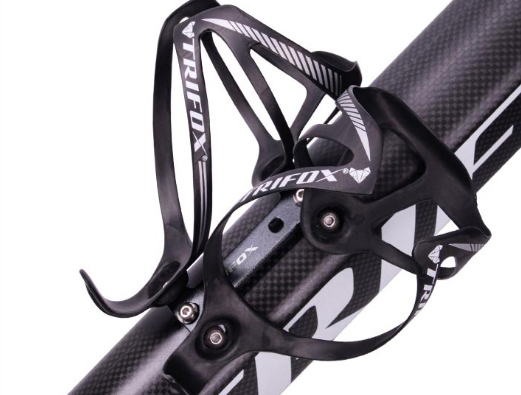
Staying hydrated while cycling is essential, and having a reliable bottle cage ensures that your water bottle is secure and easily accessible during your ride. An ultralight bottle cage not only holds your water bottle but also helps keep the weight of your bike as low as possible, which is crucial for performance-driven cyclists. Why Choose an Ultralight Bottle Cage? Before we dive into the installation process, it's worth understanding the benefits of choosing an ultralight bottle cage: Weight Reduction: Every gram counts, especially for competitive riders. Ultralight bottle cages can weigh as little as 15-30 grams, compared to traditional cages that can weigh upwards of 50 grams;High Performance: Made from materials like carbon fiber or high-grade aluminum, ultralight cages offer durability and strength without compromising weight;Aesthetic Appeal: These cages often have sleek designs that add a touch of sophistication to your bike. Tools and Materials Needed Ultralight Bottle Cage: Ensure it’s compatible with your bike frame.Allen Wrench (usually 4mm or 5mm): To tighten the bolts;Bolts: Typically provided with the bottle cage; if not, standard M5 bolts will work;Threadlocker (optional): To prevent bolts from loosening over time due to vibration. Step-by-Step Installation Guide Step 1: Prepare Your Work Area Find a clean, flat surface to work on, and gather all the necessary tools and materials. Make sure your bike is stable, either by using a bike stand or by leaning it securely against a wall. Step 2: Locate the Mounting Holes Most modern bikes come with pre-drilled holes on the down tube or seat tube designed specifically for mounting bottle cages. These holes are typically covered with small plastic plugs or bolts. If your bike doesn’t have these holes, you might need an adapter or specialized mounts that attach around the frame tubes. Step 3: Clean the Frame Before installing the bottle cage, clean the mounting area on your bike frame with a damp cloth to remove any dirt or debris. This ensures a secure fit and prevents potential damage to the frame. Step 4: Remove Existing Bolts or Plugs If your bike comes with pre-installed bolts or plastic plugs, use the Allen wrench to remove them. Keep these bolts handy, as you may need to use them to install the new bottle cage. Step 5: Position the Bottle Cage Align the holes of the ultralight bottle cage with the mounting holes on the bike frame. Make sure the cage is oriented correctly so that it holds the bottle securely and is easily accessible while riding. Step 6: Insert and Tighten the Bolts Insert the Bolts: With the cage aligned, insert the bolts through the holes in the cage and into the mounting holes on the frame. Start by hand-threading the bolts to avoid cross-threading;Apply Threadlocker (Optional): If you’re concerned about the bolts loosening over time, apply a small amount of threadlocker to the threads before fully tightening;Tighten the Bolts: Use the Allen wrench to tighten the bolts securely. Be careful not to overtighten, as this can strip the threads or damage the frame. A snug fit is sufficient. Step 7: Check for Clearance Once the bottle cage is installed, check to ensure there’s enough clearance between the cage and other components of your bike, such as the crank arms or front derailleur. Spin the pedals and move the handlebars to confirm there’s no interference. Step 8: Test the Fit with a Water Bottle Insert your water bottle into the cage to verify that it fits securely and can be easily removed and replaced while riding. The bottle should sit snugly in the cage without rattling or feeling loose. Step 9: Final Inspection Double-check that the bolts are tight and the cage is secure. Give the bottle cage a gentle tug to ensure it’s firmly attached to the frame. If everything looks good, you’re ready to hit the road or trail with your newly installed ultralight bottle cage. Conclusion Installing an ultralight bottle cage is a straightforward process that can be completed in just a few minutes with basic tools. Not only does it help in reducing the overall weight of your bike, but it also ensures you stay hydrated on your rides. By following this guide, you can easily add a functional and stylish accessory to your bike, enhancing both its performance and aesthetic appeal. Happy cycling!
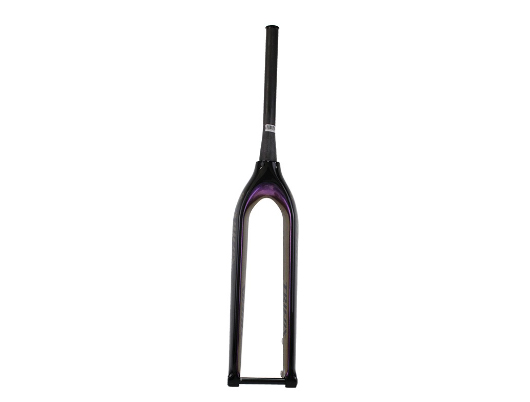
Choosing the right forks for your mountain bike (MTB) can significantly impact your ride quality, handling, and overall biking experience. This is especially true for 29er MTBs, which are designed to roll over obstacles more easily than their smaller-wheeled counterparts. With a plethora of options available on the market, selecting the best forks can be a daunting task. Understanding Fork Types Before diving into specific features, it's essential to understand the two primary types of forks available for MTBs: Rigid Forks: These forks have no suspension and are typically lighter and simpler. They are suitable for smoother trails and riders who prioritize weight savings and simplicity;Suspension Forks: These forks come with built-in shock absorbers, which help absorb impacts from rough terrain, making them ideal for aggressive trail riding and downhill adventures. Key Factors to Consider 1. Material The material of the fork plays a crucial role in its performance, weight, and durability. The Trifox carbon bike forks, for instance, are made from high-grade carbon fiber, which offers several advantages: Lightweight: Carbon fiber is much lighter than steel or aluminum, reducing the overall weight of your bike;Strength and Durability: Despite its lightness, carbon fiber is incredibly strong and durable, capable of withstanding the rigors of intense off-road riding;Vibration Damping: Carbon fiber naturally absorbs vibrations, providing a smoother ride on rough terrain. 2. Travel Travel refers to the amount of movement a suspension fork can accommodate. It’s measured in millimeters and indicates how much the fork can compress. Here’s a quick guide to help you choose the appropriate travel for your riding style: 80-100mm: Suitable for cross-country riding, offering efficiency and lightweight performance;120-140mm: Ideal for trail riding, providing a balance between uphill efficiency and downhill capability;150mm+: Best for enduro and downhill riding, offering maximum absorption for rough and technical terrain. 3. Compatibility Ensure that the fork you choose is compatible with your bike’s frame and components. Key compatibility considerations include: Wheel Size: Make sure the fork is designed for 29-inch wheels;Steerer Tube Diameter: Common diameters are 1-1/8” straight and 1.5” tapered. Check your bike’s head tube specifications;Axle Type and Size: Standard sizes include 9mm quick release and 15mm or 20mm thru-axles. Verify your hub’s specifications. 4. Adjustability Modern suspension forks often come with various adjustability features to customize the ride feel: Rebound Adjustment: Controls the speed at which the fork returns to its original position after compressing;Compression Adjustment: Allows you to fine-tune the fork’s compression rate, affecting how it absorbs impacts;Lockout: A feature that locks the suspension, transforming it into a rigid fork for efficient climbing or road riding. 5. Weight Weight is a critical factor, especially if you’re a competitive rider or frequently tackle long climbs. Carbon fiber forks, like those from Trifox, offer significant weight savings without compromising strength and performance. Lighter forks improve acceleration, climbing efficiency, and overall agility. 6. Price and Value While top-tier forks come with a higher price tag, they also offer advanced features, superior materials, and better performance. Evaluate your budget and identify the key features that will enhance your riding experience. The Trifox carbon bike forks strike an excellent balance between performance, durability, and cost, making them a great option for serious riders. Why Choose Trifox Carbon Bike Forks? Trifox carbon bike forks are a standout choice for several reasons: Superior Material: Made from high-grade T800 carbon fiber, these forks combine light weight with exceptional strength and durability;Precision Engineering: Trifox forks are meticulously designed to provide optimal performance, whether you're tackling technical trails or cruising smooth singletracks;Versatility: Compatible with a wide range of bikes and components, Trifox forks offer broad customization options to suit your specific needs;Value for Money: Offering premium features at a competitive price point, Trifox carbon bike forks deliver excellent value for both amateur enthusiasts and seasoned riders. Conclusion Choosing the right forks for your MTB 29 is essential for optimizing your bike's performance and ensuring a smooth, enjoyable ride. By considering factors such as material, travel, compatibility, adjustability, weight, and price, you can make an informed decision that meets your specific riding needs. Trifox carbon bike forks provide a compelling option, offering advanced features and exceptional performance at a reasonable cost. Invest in the right forks, and elevate your mountain biking experience to new heights!
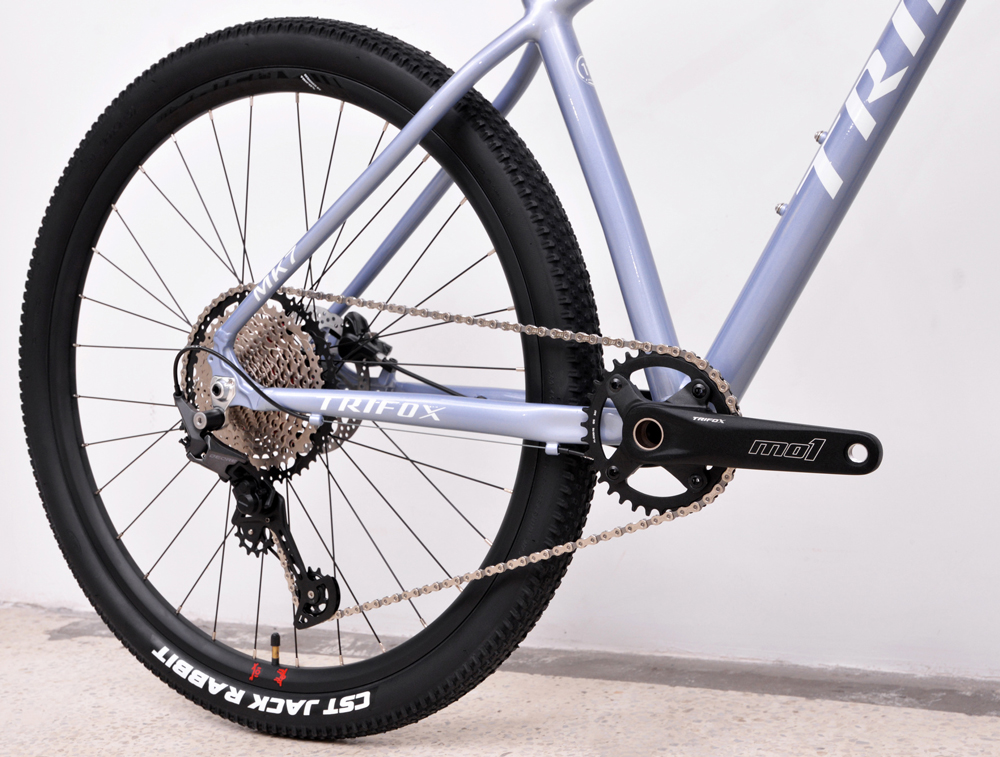
Maintaining your bicycle's wheel integrity is crucial for a smooth and safe ride. One of the key aspects of wheel maintenance is ensuring that the spokes are properly tightened. Loose or unevenly tensioned spokes can lead to wobbly wheels, poor handling, and even catastrophic failure over time. Understanding Bicycle Spokes and Wheel Tension Before diving into the process, it’s essential to understand the role of spokes in your bicycle wheel. Spokes connect the wheel hub to the rim, distributing the weight evenly and maintaining the wheel's shape. Proper spoke tension ensures that the wheel remains true (straight) and can withstand the forces exerted during riding. Tools You'll Need To tighten your bicycle spokes, you’ll need the following tools: Spoke Wrench: A small tool used to adjust the tension of the spokes.Truing Stand: Optional but helpful for more precision; otherwise, you can use your bike frame;Tension Meter: Optional but useful for measuring spoke tension accurately;Marker or Tape: To mark the starting point on the wheel for reference. Step-by-Step Guide to Tightening Bicycle Spokes Step 1: Prepare Your Bike Flip Your Bike: Turn your bike upside down or place it on a bike stand to elevate the wheels off the ground. This will allow the wheels to spin freely;Remove the Tire: If you’re using a truing stand, remove the tire to get a clear view of the rim. For casual adjustments, you can leave the tire on. Step 2: Identify Loose Spokes Spin the Wheel: Spin the wheel slowly and look for any wobbles or deviations from its straight path. Pay attention to spots where the rim gets closer or further away from the brake pads;Check Spoke Tension: Squeeze pairs of spokes together with your fingers. Loose spokes will feel noticeably different compared to properly tensioned ones. Step 3: Mark the Starting Point Use a marker or tape to mark the spot on the rim where you’ll begin adjustments. This helps ensure you don’t miss any spokes and maintains an organized approach. Step 4: Tighten the Spokes Turn the Spoke Wrench: Place the spoke wrench on the nipple (the part that connects the spoke to the rim). Turn it clockwise to tighten the spoke. Start with small adjustments, about a quarter-turn at a time;Alternate Spokes: Always alternate between spokes on either side of the wheel to maintain balance. Tighten a spoke on one side, then move to the opposite side;Check Progress: After adjusting a few spokes, spin the wheel again to check for improvements. Continue making small adjustments until the wheel is true. Step 5: Fine-Tuning Minor Adjustments: If the wheel is still not perfectly true, make minor adjustments to individual spokes. Tighten spokes on the side where the rim deviates inward and loosen those where it deviates outward;Check Tension: Use a tension meter if available to ensure all spokes have uniform tension. Proper tension will vary depending on the wheel type, so refer to the manufacturer’s specifications if needed. Step 6: Final Checks Recheck Alignment: Spin the wheel one last time to ensure it is perfectly true and free of wobbles;Secure Spoke Nipples: Ensure that all spoke nipples are securely tightened. Loose nipples can unwind during a ride, causing the spokes to lose tension. Step 7: Reassemble and Test Ride Replace the Tire: If you removed the tire earlier, reattach it now;Test Ride: Take your bike for a short test ride to ensure everything feels right. Listen for any unusual sounds and check for any wobbling in the wheels. Additional Tips for Maintaining Spoke Tension Regular Maintenance: Regularly check your spokes for tension and alignment. Addressing loose spokes early can prevent more significant issues;Avoid Over-tightening: Over-tightening spokes can cause them to snap or put too much stress on the wheel, leading to potential damage;Consistency is Key: Aim for consistent tension across all spokes to prevent imbalances that can affect the wheel's performance. Conclusion Tightening bicycle spokes may seem like a daunting task, but with patience and the right tools, it becomes a manageable and rewarding aspect of bike maintenance. By following this step-by-step guide, you can ensure your wheels remain true, providing a smoother and safer ride. Regularly checking and maintaining your spoke tension will extend the life of your wheels and enhance your overall cycling experience. Happy riding!
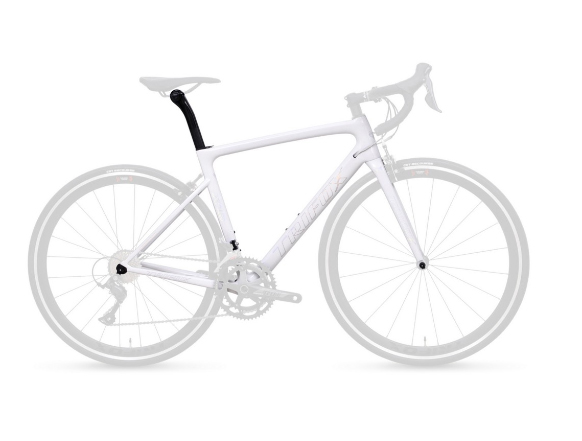
Achieving the perfect fit for your road bike is essential for comfort, efficiency, and injury prevention. A well-fitted bike allows you to ride longer distances with ease while maximizing your performance. Here’s a comprehensive guide to help you get the ideal fit for your road bike. 1. Frame Size Matters The foundation of a great fit starts with the right frame size. Trifox carbon road bike frames offer various sizes designed to cater to different body types and riding styles. Ensure the frame size corresponds to your height and inseam measurements. A proper fit frame will allow for adequate stand-over clearance and reach. 2. Saddle Height and Position Setting your saddle height correctly is crucial for efficient pedaling and knee health. When seated, your leg should be almost fully extended at the bottom of the pedal stroke, with a slight bend in the knee. Adjust the saddle position so that your knees align with the pedal axles when viewed from the side. This alignment helps in maintaining an efficient and comfortable pedal stroke. 3. Handlebar Reach and Drop Handlebar reach affects your posture and control on the bike. You should be able to comfortably reach the handlebars without overextending or feeling cramped. The handlebars should be set at a height where you can maintain a slight bend in your elbows, promoting a relaxed upper body position. The drop from the saddle to the handlebars should correspond to your flexibility and riding style—less flexible riders may prefer a smaller drop. 4. Cleat Positioning If you use clipless pedals, proper cleat positioning is key. Align the cleats so that the ball of your foot is directly over the pedal axle. This positioning ensures optimal power transfer and reduces strain on your knees. 5. Fine-Tuning Even after setting up the basics, fine-tuning is often necessary. Adjustments like saddle tilt, handlebar angle, and stem length can make significant differences in comfort. Small tweaks can always be made based on how you feel during your rides. 6. Professional Bike Fitting For the ultimate fit, consider getting a professional bike fitting. An expert can analyze your body mechanics and make precise adjustments to optimize your bike fit. This service is especially beneficial for competitive cyclists or those who experience discomfort despite making basic adjustments. Conclusion Achieving the perfect fit for your road bike involves careful consideration of frame size, saddle height and position, handlebar reach and drop, and cleat positioning. Regular fine-tuning and professional fittings can further enhance your comfort and performance. For high-quality frames that can be adjusted to meet your specific needs, check out the Trifox carbon road bike frames. With the right fit, you'll enjoy a more comfortable, efficient, and enjoyable ride every time.
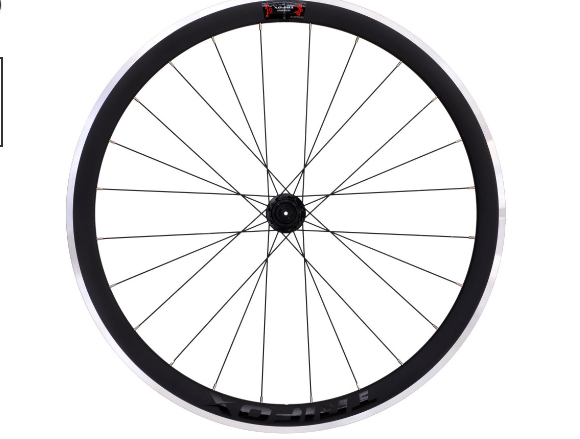
Choosing the best high-end aluminum wheels for your bike is a critical decision that can significantly impact your ride's performance, comfort, and durability. High-end aluminum wheels offer a balance of strength, weight savings, and cost-effectiveness, making them a popular choice among cyclists. Here’s how to select the perfect set for your needs. 1. Understand Your Riding Style Before diving into specifics, consider your primary riding style: Mountain Biking: If you frequently tackle rough terrains and trails, you'll need robust wheels that can withstand heavy impacts and provide excellent traction;Road Cycling: For road cycling, lightweight wheels with low rolling resistance are essential for speed and efficiency;Commuting: Durability and reliability are key for daily commuting, as you’ll need wheels that can handle varied conditions and frequent use. 2. Evaluate Wheel Specifications When looking at high-end aluminum wheels, pay attention to the following specifications: Rim Width and Depth: Wider rims offer better stability and can accommodate a range of tire sizes, while deeper rims improve aerodynamics;Spoke Count: More spokes generally mean stronger wheels, which is crucial for mountain biking or heavier riders;Hub Quality: High-quality hubs, like those found in Trifox mountain bike wheels, ensure smooth rotation and long-term reliability. 3. Check Material and Construction High-end aluminum wheels are typically made from advanced alloys that offer a great balance of weight and strength. Look for wheels with features such as reinforced spoke holes and welded seams for added durability and performance. 4. Seek Expert Reviews and Recommendations Consulting expert reviews and recommendations can provide valuable insights into the performance and reliability of specific wheel models. Many cycling forums and review sites offer detailed assessments from experienced riders. 5. Consider Price and Warranty High-end aluminum wheels can be a significant investment, so consider your budget carefully. Look for brands that offer a good warranty, as this can protect you against manufacturing defects and give you peace of mind. 6. Test Ride if Possible If you have the opportunity, test ride a bike with the wheels you're considering. This firsthand experience can help you feel the difference in performance and ensure the wheels meet your expectations. Conclusion Selecting the best high-end aluminum wheels for your bike involves understanding your riding style, evaluating key specifications, checking material and construction quality, seeking expert opinions, considering price and warranty, and ideally, test riding. For top-notch options, explore the Trifox mountain bike wheels, known for their durability and performance. With the right wheels, you can enhance your cycling experience and enjoy smoother, more efficient rides.
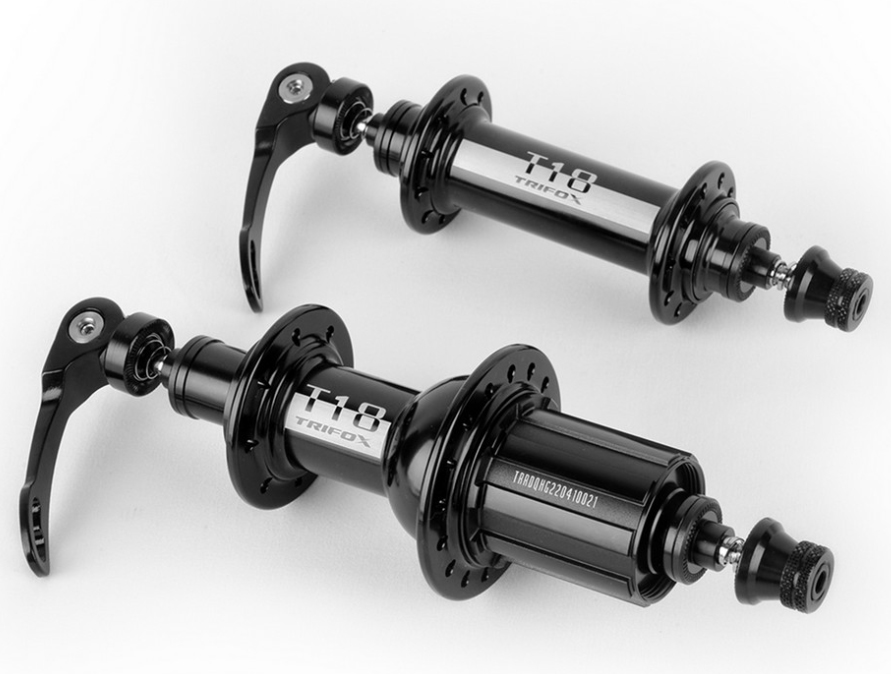
Maintaining and upgrading your Trifox freehub is essential for ensuring smooth, reliable performance on the trails and roads. Proper maintenance can extend the life of your components, while timely upgrades can enhance your riding experience. Importance of Regular Maintenance Regular maintenance of your freehub is crucial for several reasons: Performance: A well-maintained freehub ensures smooth and efficient power transfer from your pedals to the wheels;Durability: Routine care prevents premature wear and tear, extending the lifespan of your freehub;Safety: Properly functioning components reduce the risk of accidents caused by sudden mechanical failures. Steps to Clean and Lubricate Your Freehub Remove the Freehub: Start by removing the rear wheel from your bike. Use a wrench to carefully unscrew the freehub from the hub body;Clean Thoroughly: Wipe down the freehub with a clean cloth to remove dirt and grime. Use a degreaser to clean the internal parts, ensuring all old lubricant and debris are eliminated;Inspect for Wear: Check the pawls and ratchets for signs of wear or damage. Look for any cracks or chips in the freehub body;Lubricate: Apply a light layer of freehub-specific lubricant to the pawls and ratchets. Avoid over-lubricating, as excess grease can attract dirt and cause buildup;Reassemble: Carefully reassemble the freehub and reinstall it onto the rear wheel. Ensure all parts are securely tightened. Signs of Wear and When to Upgrade Even with regular maintenance, freehubs can wear out over time. Here are some signs that it might be time to upgrade: Noise: Unusual clicking or grinding noises indicate worn out or damaged pawls and springs;Slippage: If your pedals slip under pressure, the freehub's engagement mechanism may be failing;Difficulty Shifting: Hard-to-shift gears can signal internal issues within the freehub body. Benefits of Upgrading Upgrading to a higher-quality Trifox freehub offers several benefits: Improved Performance: Enhanced engagement mechanisms provide quicker and more precise power transfer;Increased Durability: High-quality materials and construction mean longer-lasting components;Better Riding Experience: Smoother operation and reduced noise contribute to a more enjoyable ride. Conclusion Maintaining and upgrading your Trifox freehub is a vital part of bike upkeep. By regularly cleaning and lubricating your freehub, inspecting for signs of wear, and upgrading when necessary, you ensure optimal performance and longevity. For a wide range of high-quality bike components, including freehubs, visit TrifoxBike. Keep your bike running smoothly and enjoy every ride to the fullest!
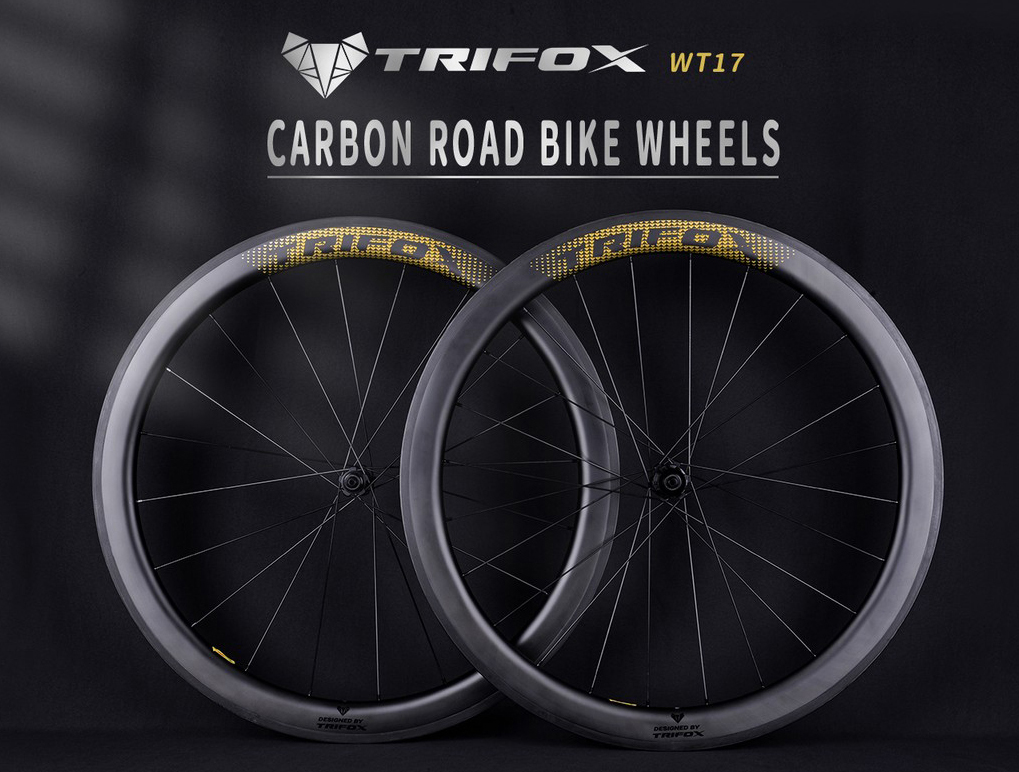
Selecting the right tire width for your climbing bike can make a significant difference in your performance, comfort, and overall riding experience. Whether you're tackling steep ascents or long, winding hill rides, choosing the optimal tire width is crucial. Here’s a guide to help you make an informed decision. 1. Understand Tire Width Basics Tire width affects various aspects of your ride, including rolling resistance, traction, and comfort. Narrower tires generally offer lower rolling resistance, making them faster on smooth surfaces. Wider tires provide better traction and comfort, especially on rough terrain. The key is to strike a balance that suits your climbing needs. 2. Consider Your Terrain The type of terrain you typically ride on plays a significant role in determining the optimal tire width. Smooth Pavement: If most of your climbs are on well-paved roads, narrower tires (23-25mm) might be ideal. They reduce rolling resistance, making it easier to sustain higher speeds;Mixed Surfaces: For climbs that include both pavement and rougher sections, slightly wider tires (25-28mm) can offer a good balance. They provide enough grip and comfort without sacrificing too much speed;Gravel or Rough Terrain: If your climbs often take you off-road, opt for even wider tires (28-32mm). These tires will provide the necessary traction and cushioning to handle uneven surfaces effectively. 3. Assess Your Riding Style Your personal riding style also influences the choice of tire width. Speed-Oriented Climbers: If you prioritize speed and efficiency, narrower tires may be more suitable. They help you maintain a brisk pace, especially on smooth climbs;Comfort-Focused Riders: If you value a more comfortable and stable ride, particularly on longer climbs, wider tires are better. They absorb more road vibrations and provide a smoother ride. 4. Factor in Bike Compatibility Ensure that your bike frame and rims can accommodate your chosen tire width. Check the manufacturer's specifications for the maximum tire width your bike can handle. Using tires that are too wide for your frame can lead to clearance issues and potentially damage your bike. 5. Experiment and Adjust Ultimately, finding the optimal tire width might require some experimentation. Start with a width recommended for your typical terrain and riding style. Pay attention to how your bike handles and feels during climbs. Don’t hesitate to make adjustments if necessary. Conclusion Choosing the optimal tire width for your climbing bike is a balance between rolling resistance, traction, comfort, and compatibility. By considering the terrain, your riding style, and bike specifications, you can find the perfect tire width to enhance your climbing performance and enjoyment. Happy climbing!

















